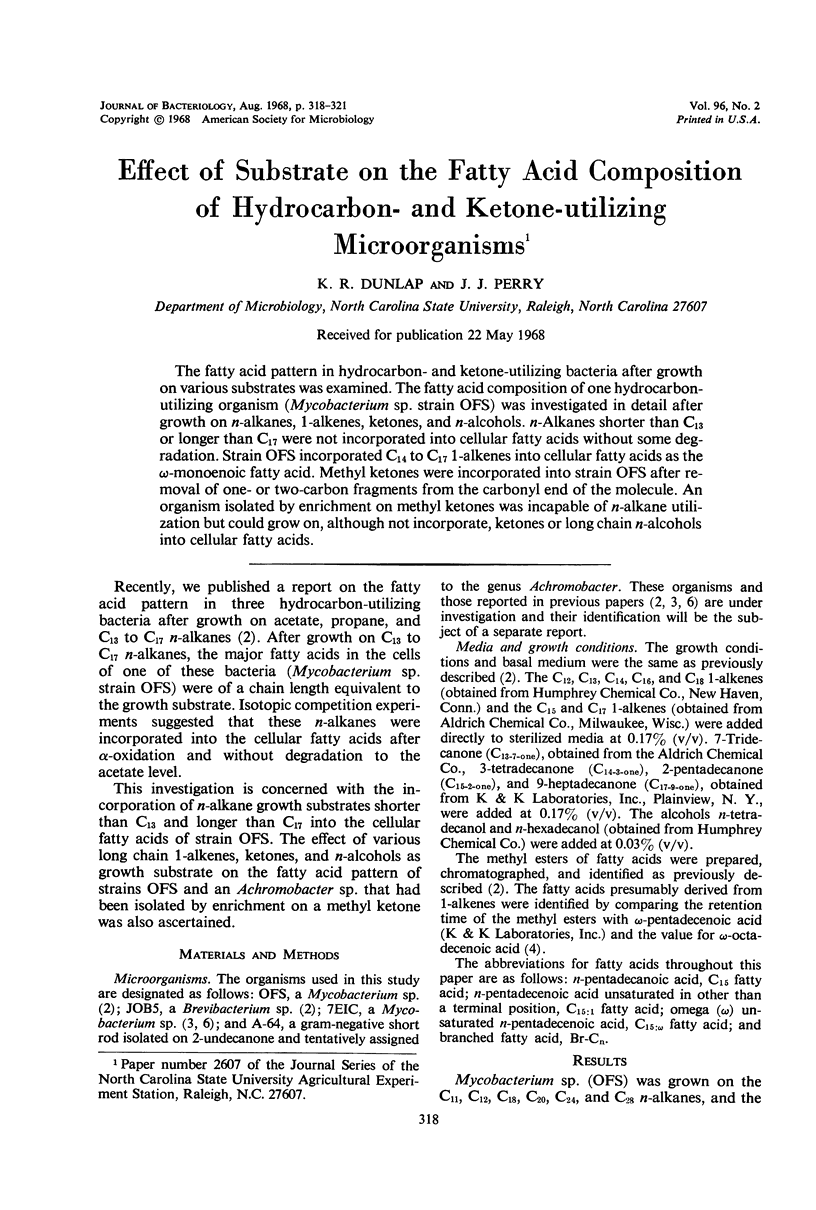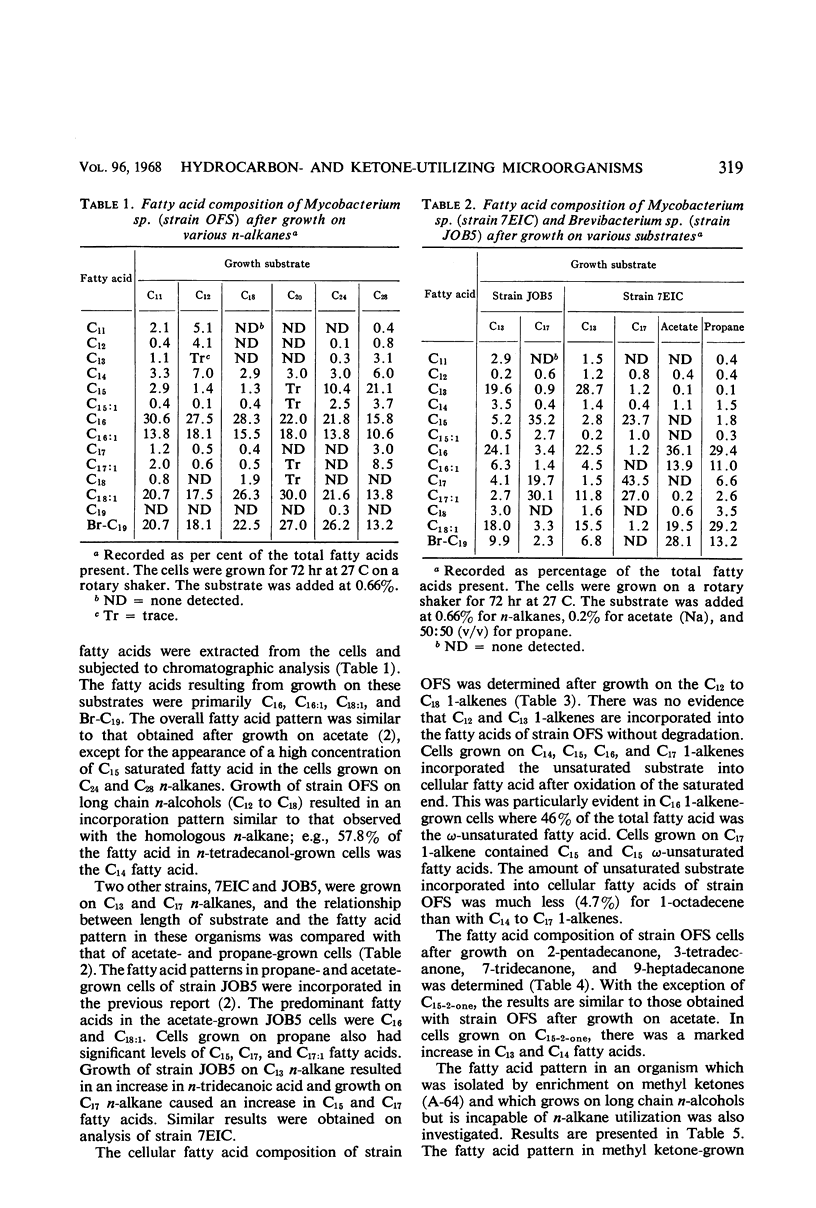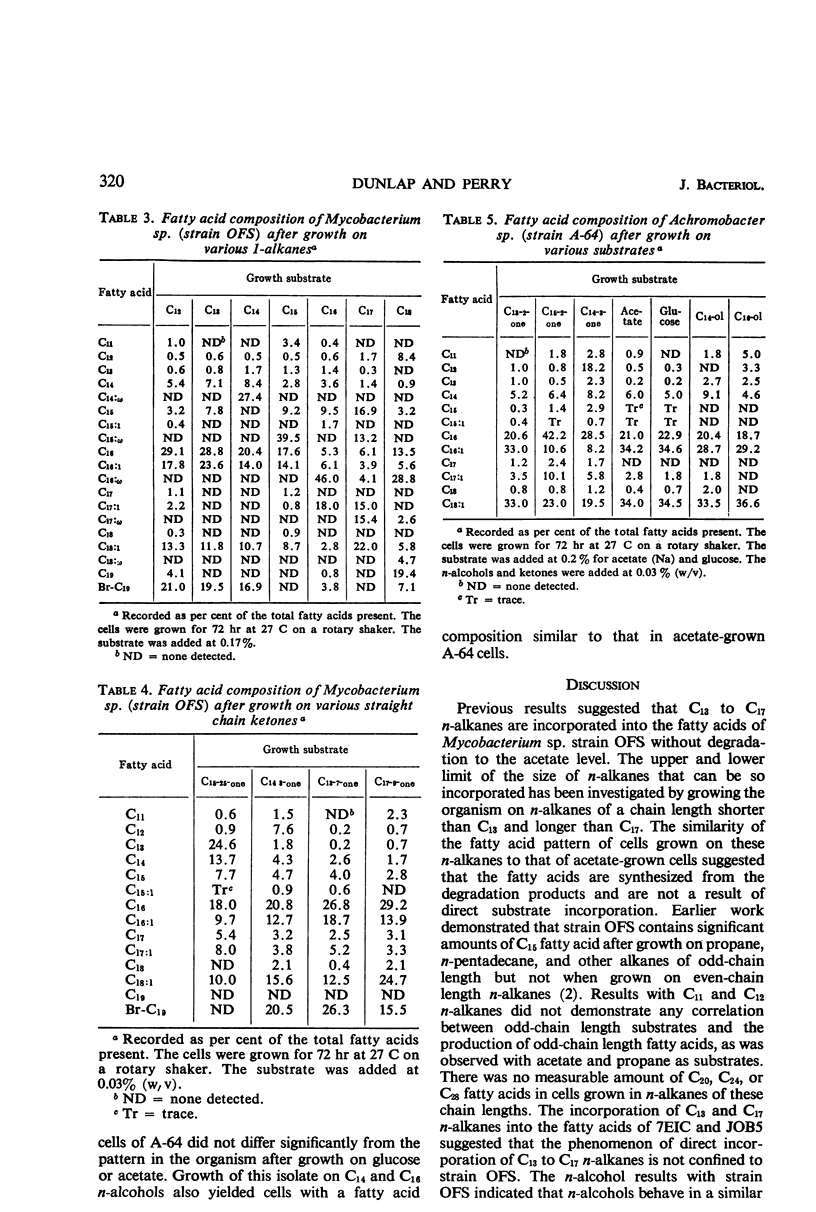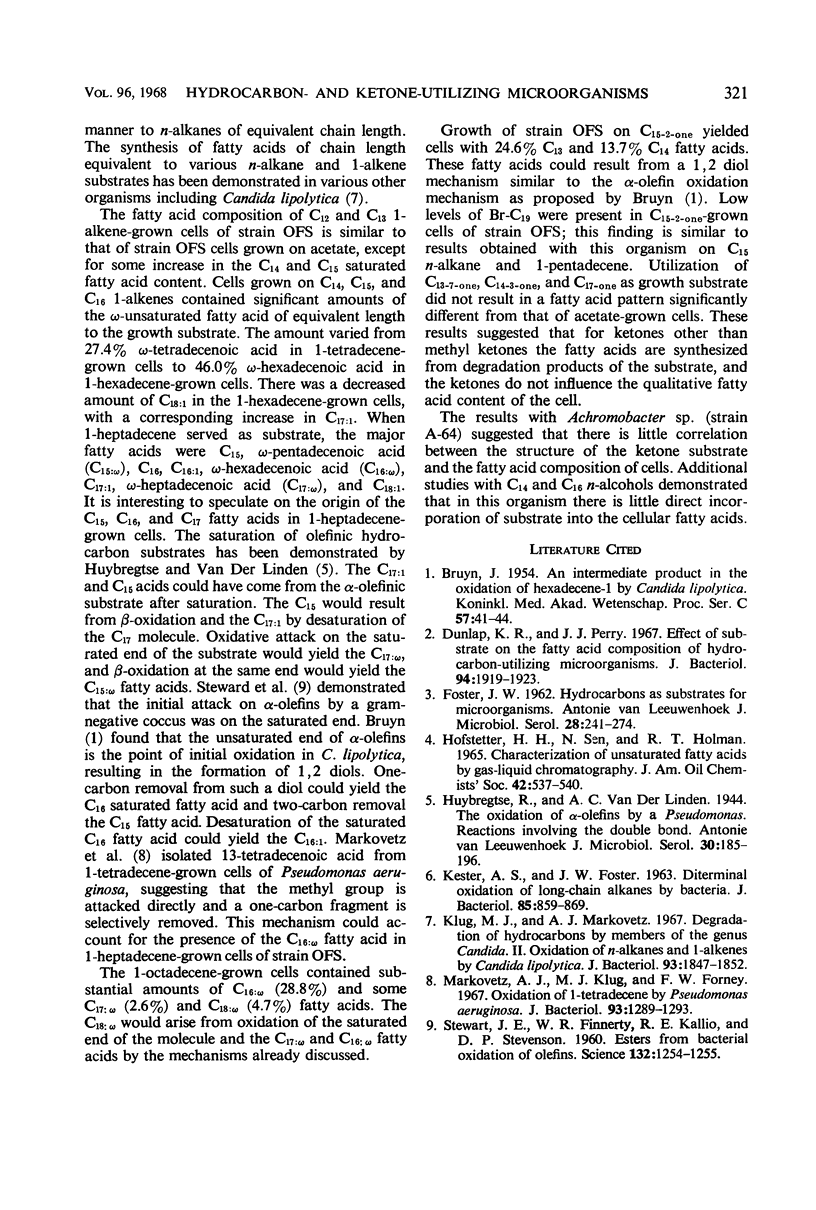Abstract
The fatty acid pattern in hydrocarbon- and ketone-utilizing bacteria after growth on various substrates was examined. The fatty acid composition of one hydrocarbon-utilizing organism (Mycobacterium sp. strain OFS) was investigated in detail after growth on n-alkanes, 1-alkenes, ketones, and n-alcohols. n-Alkanes shorter than C13 or longer than C17 were not incorporated into cellular fatty acids without some degradation. Strain OFS incorporated C14 to C17 1-alkenes into cellular fatty acids as the ω-monoenoic fatty acid. Methyl ketones were incorporated into strain OFS after removal of one- or two-carbon fragments from the carbonyl end of the molecule. An organism isolated by enrichment on methyl ketones was incapable of n-alkane utilization but could grow on, although not incorporate, ketones or long chain n-alcohols into cellular fatty acids.
Full text
PDF



Selected References
These references are in PubMed. This may not be the complete list of references from this article.
- Dunlap K. R., Perry J. J. Effect of substrate on the fatty acid composition of hydrocabon-utilizing microorganisms. J Bacteriol. 1967 Dec;94(6):1919–1923. doi: 10.1128/jb.94.6.1919-1923.1967. [DOI] [PMC free article] [PubMed] [Google Scholar]
- FOSTER J. W. Hydrocarbons as substrates for microorganisms. Antonie Van Leeuwenhoek. 1962;28:241–274. doi: 10.1007/BF02538739. [DOI] [PubMed] [Google Scholar]
- HOLMAN R. T., HOFSTETTER H. H. THE FATTY ACID COMPOSITION OF THE LIPIDS FROM BOVINE AND PORCINE REPRODUCTIVE TISSUES. J Am Oil Chem Soc. 1965 Jun;42:540–544. doi: 10.1007/BF02540098. [DOI] [PubMed] [Google Scholar]
- HUYBREGTSE R., VANDERLINDEN A. C. THE OXIDATION OF ALPHA-OLEFINS BY A PSEUDOMONAS. REACTIONS INVOLVING THE DOUBLE BOND. Antonie Van Leeuwenhoek. 1964;30:185–196. doi: 10.1007/BF02046725. [DOI] [PubMed] [Google Scholar]
- KESTER A. S., FOSTER J. W. DITERMINAL OXIDATION OF LONG-CHAIN ALKANES BY BACTERIA. J Bacteriol. 1963 Apr;85:859–869. doi: 10.1128/jb.85.4.859-869.1963. [DOI] [PMC free article] [PubMed] [Google Scholar]
- Klug M. J., Markovetz A. J. Degradation of hydrocarbons by members of the genus Candida. II. Oxidation of n-alkanes and l-alkenes by Candida lipolytica. J Bacteriol. 1967 Jun;93(6):1847–1852. doi: 10.1128/jb.93.6.1847-1852.1967. [DOI] [PMC free article] [PubMed] [Google Scholar]
- Markovetz A. J., Klug M. J., Forney F. W. Oxidation of 1-tetradecene by Pseudomonas aeruginosa. J Bacteriol. 1967 Apr;93(4):1289–1293. doi: 10.1128/jb.93.4.1289-1293.1967. [DOI] [PMC free article] [PubMed] [Google Scholar]
- Stewart J. E., Finnerty W. R., Kallio R. E., Stevenson D. P. Esters from Bacterial Oxidation of Olefins. Science. 1960 Oct 28;132(3435):1254–1254. doi: 10.1126/science.132.3435.1254. [DOI] [PubMed] [Google Scholar]


